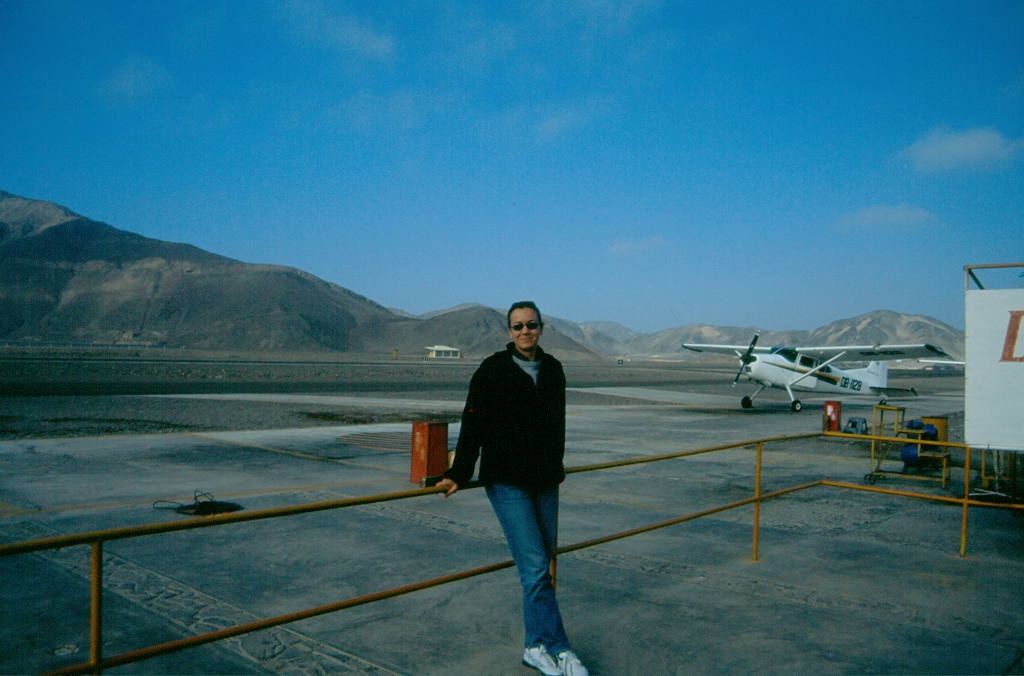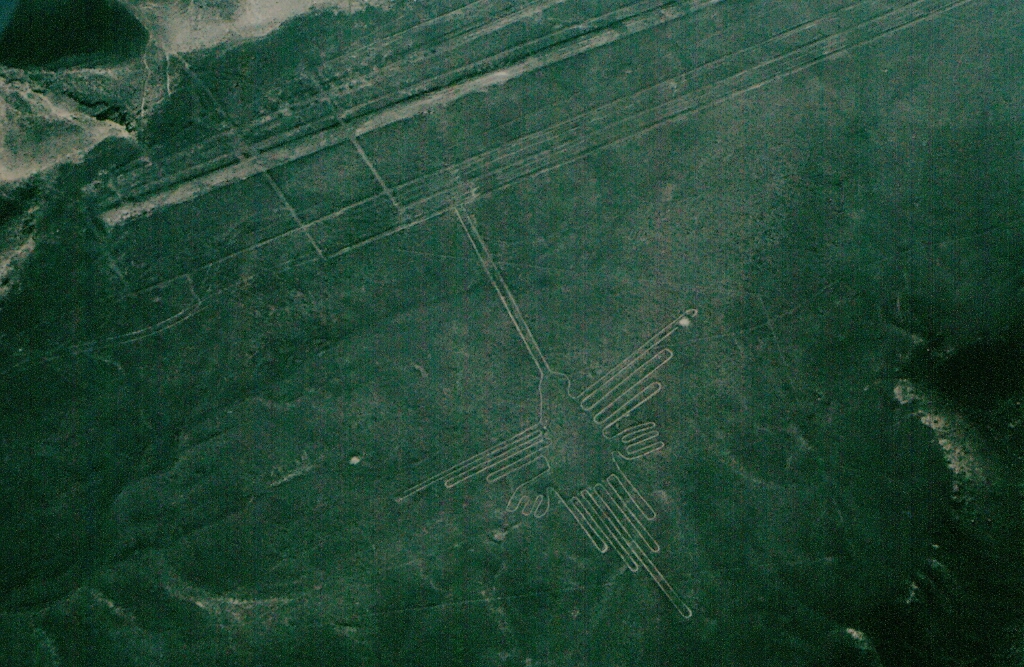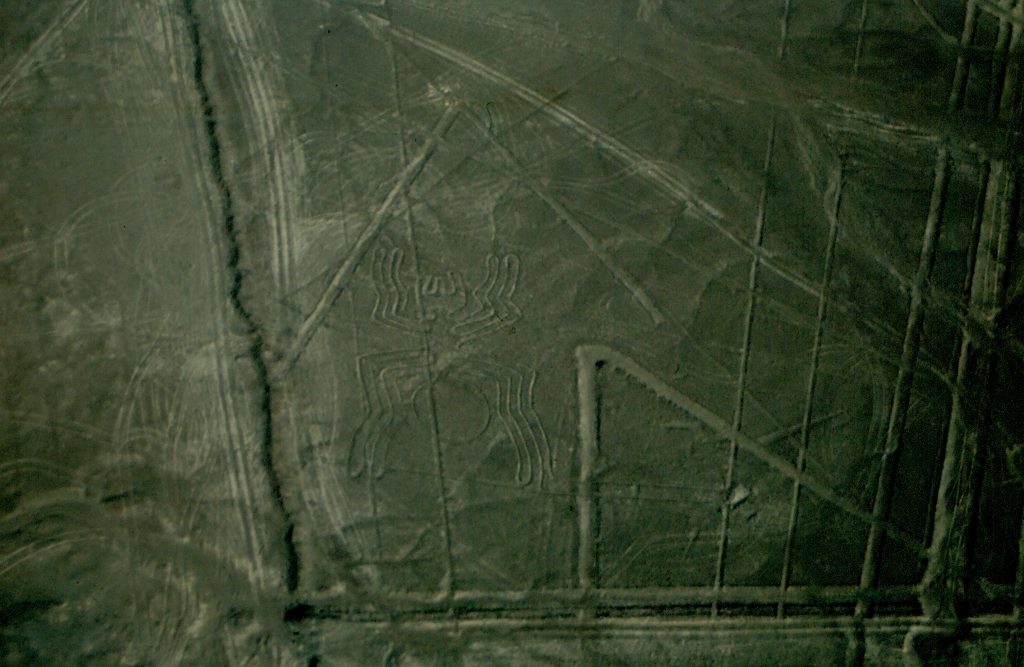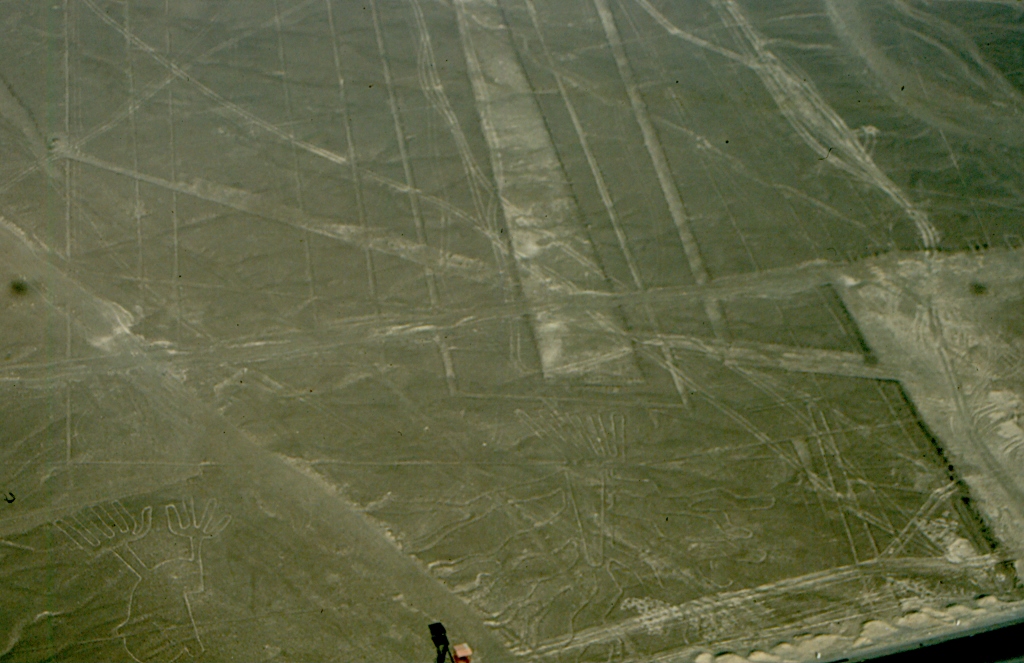We had barely left Lima, when the coach stopped for a break. I guess on account of stress and squeezing through an incredible traffic jam. As I sat in the coach, I could quietly observe large packages and bulky baggage being lifted onto the roof of a neighbouring coach. I also watched local merchants offering fruits and snacks to passengers through coach windows.
The Pan-American road that leads from Lima to the south runs parallel to the coast. The Pacific coast in that section is not particularly pretty. The Humboldt Current that originates in Antarctica runs beside it and the sand is unattractively dark. In addition, the road goes through a desert or at least a barren land. Every now and then one can see some settlements along the road and cannot help but wonder what these people live on and who was the first to come up with this idea to put down roots right here. But, these barren areas are occasionally cut through by rivers running towards the Pacific and it is actually possible to live in those valleys. As a matter of fact, even some great civilizations flourished here in the past. Nowadays, one can see that people do try to plant a tree here and there, and in a few places I could notice some evergreen trees that I was told have extremely long roots thus reaching underground water in order to survive.
The first stop I planned to make in the south was the town of Nazca. When I left Lima I was told the trip would take 6 hours, while in fact it took 8 and a half. There I started to get used to the idea of relative time and to learn to relax since my frustration would not speed up the coach in any way. Seems highly unlikely, but this could perhaps be the ideal place to practice inner discipline. At the terminal I was greeted by Julio, a guy from the hotel. When I booked a room from Lima, Virginia, who helped me in this, told them strictly using her Spanish-teacher’s voice to make sure they took care of me, although neither she knew them nor they knew her. However, it seemed that these guys took her seriously and were exceptionally kind and forthcoming. By the way, Virginia had also advised me that if I needed any information or advice I should always ask people working at receptions since they apparently must be correct with tourists.
So, I settled well and soon went out for a walk. Nazca is a small place and there was not so much to do there, but I did buy some postcards, went for a meal and was soon back in my room ready to go to sleep since I had to be ready at 7.30 the next morning in order to go to a nearby airport. With my dinner I also had a glass of wine, so in a wavy state of being I moved to the land of dreams in no time at all.
The main attraction in Nazca is its famous geoglyphs, i.e., the lines “drawn” across the desert. It is impossible to see anything from the ground and the people of “our times,” if I can put it that way, only became aware of them in the first half of the 20th century when airplanes started to fly over this area. It is absolutely unknown what their exact purpose was, but of course that doesn’t prevent existence of numerous theories as to why they were made – for agricultural purposes, on account of astronomy or that they were made by extraterrestrials since the terrestrials could not see them. However, there are similar motifs on pottery as well, so unless some alien sat by a potter’s wheel and decorated vessels killing time while waiting for his next ride home, the theory remains that the authors were from this planet. Somehow it was established that the lines were made in the period from the beginning of this era to the year 1000 AD. The desert in this region does not consist of sand alone, there are lots of rocks and stones, and the lines were made by clearing off rocks following certain patterns and thus creating different forms. These have been given the following names: Whale, Triangle, Trapezoids, Astronaut, Monkey, Dog, Condor, Spider, Hummingbird, Pelican, Parrot, Hands and Tree. In addition to these forms, the entire area is cross-crossed by wider or narrower “stripes” on the ground that stretch in a straight line and are reminiscent of landing strips. Hence, among other reasoning, this idea of aliens for these lines apparently helped them land. Be as it may, we still do not have a clue as to what really went on here, but this certainly doesn’t prevent us from admiring the site.
When you get to the airport you need to wait a little, while some minor formalities get sorted out, but it is important to fly earlier in the morning as the visibility is significantly better then. The flights are made in small airplanes and I was given the honour of sitting next to the pilot. In addition to the two of us the plane had space for only two more passengers who were sitting behind us.
 At the airport in Nazca
At the airport in Nazca
The flight was supposed to take 45 minutes, but they actually cut it a little short. And that was for the best. The beginning was great, but when the little plane started to swirl around and lean a little to the left and a little to the right, in order to allow us to have a better view at the geoglyphs, then the pressure in the head got all mixed up and the feeling was not a pleasant one. Although I did not feel sick, I still had an unclear head and was looking forward to landing. I guess, one needs to get used to that.
Still, the lines were truly fascinating and when the unpleasant effect in my head faded away, I did wish the flight had been a little longer. This way, by the time I spotted the “drawing”, took a photo and shot with the video camera, it was already the time for me to peer carefully and try to spot the next one. Or maybe it’s just that some people are really hard to please!
 Hummingbird, Nazca
Hummingbird, Nazca
 Spider, Nazca
Spider, Nazca
 Top: the lines; bottom left: Hands; bottom centre: Tree. Completely in the bottom, in the centre: a ground platform from which it is possible to look at the “drawings,” while in the bottom right corner it is possible to see a part of the Pan-American road
Top: the lines; bottom left: Hands; bottom centre: Tree. Completely in the bottom, in the centre: a ground platform from which it is possible to look at the “drawings,” while in the bottom right corner it is possible to see a part of the Pan-American road
After I had received a proper and officially signed “Certificate” stating I had been there, I went back to Nazca with a clear intention to head towards Arequipa that very afternoon. However, it turned out that I would travel there over night, as there was no suitable transportation, so I just started to kill time in Nazca. There was not much for me to do there (I went around the centre five times), but since I had already started to turn into a philosopher, it was ok.
I went with Julio from the hotel to a shop where they made freshly squeezed juices and sold fruits: granadillas, small bananas, maracuyas (passion fruits), oranges, pineapples, apples and cherimoyas (custard apples). I took a passion fruit juice and bought small bananas, granadillas and cherimoyas to eat later at the hotel, since I had agreed with them to stay in my room until the evening against some small additional payment. I had tried passion fruit before and I really love that amazingly refreshing combination of high acidity and high sweetness, but Virginia had told me (again) that they use passion fruits for juices and they eat granadillas. The fruits are of the same shape and practically of the same structure, but maracuyas are yellow on the outside, slightly bigger and their seeds have yellowish-orange membrane, while granadillas are purple-brownish on the outside and their membrane is greyish. Still, although not particularly attractive at first sight, they are truly exceptionally sweet, without much acidity, so I followed the local customs and ate only them. As for cherimoya, I wouldn’t know how to describe the taste except to say it is divine. I have decimated them throughout South America, but these from Nazca have remained in my memory as particularly succulent and sweet.
I also tried to eat ceviche in Nazca. It is a dish I already heard of in Ecuador, but back then I was less prone to gastronomic adventures, so I decided to remedy that here and with ceviche. The dish may be made of chicken, but much more frequently it is made of fish or seafood. While raw everything is cut into small bite-size pieces with addition of onions and seasoning, and then everything is covered by lime juice. And then, literally after a couple of minutes, this is “cooked” and ready to be eaten. Sounds incredible, but in fact the acidity from limes processes the meat and it is exceptionally tasty and fully edible. However, as it was early afternoon, all cevicherias, special restaurants serving this type of food, were closed. I was perplexed, but then it was explained to me that ceviche is eaten only and solely in the morning, since the body needs time to process all of this acidity.
I passed the day in relaxed and aimless wondering around, and in the evening I took a coach to Arequipa. It was quite a good coach, we even got dinner like on a plane, and the seats were comfortable enough for me to sleep. I usually have problems sleeping in transportation, on account of the lack of space, but the situation here was rather cosy, so I ended up sleeping quite well (but all the time holding my little backpack on my lap, covered by my jacket).
Early in the morning we were woken up by some rather loud music, but it turned out all right, as I got a chance to have a proper chat with my next seat “neighbour” from the coach who was on his way to his hometown.